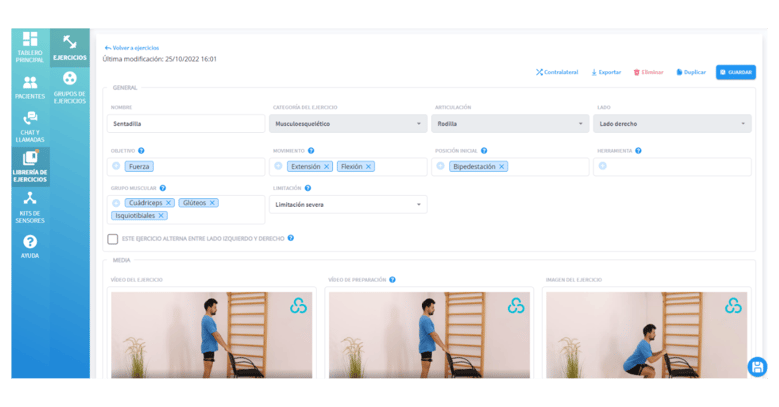Every day our development team creates new functionalities that help both professionals and patients in their daily lives. These are the new features and upgrades we have this month.
Improved camera detection through smarter algorithms
Accessibility to our technology has improved, now ReHub is able to reach more patients as ReHub works with high-end devices or low-end devices. Using machine learning techniques and artificial intelligence algorithms, ReHub is able to detect in seconds the camera of any mobile device, tablet or laptop providing information about the patient's exercise performance and correct the patient in real time if necessary..gif?width=800&height=419&name=Funcionalidades%20Septiembre%20IG%20(3).gif)
Greater flexibility to create your exercises
Exercises have 2 new fields, one called Muscle Group and the other called Limitation. Inside the muscle group field there is a list of 30 muscle groups to be more specific which muscles are working in that exercise; and in the limitation field you can select to which limitation that exercise is associated, choosing between mild, moderate and severe.
You can also use these filters to search for an exercise with specific characteristics.  On the other hand, the ReHub library has new exercises and exercise groups from Sermef (Spanish Society of Rehabilitation and Physical Medicine).
On the other hand, the ReHub library has new exercises and exercise groups from Sermef (Spanish Society of Rehabilitation and Physical Medicine).
Remember that ReHub has at your disposal more than 1300 validated exercises for therapeutic practice covering the most common treatments such as low back pain, neck pain, total knee arthroplasty, rotator cuff injury, meniscus tear, anterior cruciate ligament injury, frozen shoulder, among many others.
Customization in the configuration of Questionnaires
With the new version, professionals will be able to configure individually the periodicity of each questionnaire that is added to a patient's therapy. In other words, one questionnaire can be shown to the patient every week, another every month and another only at the end of therapy.
This will give physiotherapists more flexibility to design therapies and allows them to customize the time at which the patient receives the questionnaires.
-1.png?width=700&height=350&name=Dise%C3%B1o%20sin%20t%C3%ADtulo%20(6)-1.png)
.png?width=1092&height=497&name=RehubbyDycare_cobalto%20(4).png)